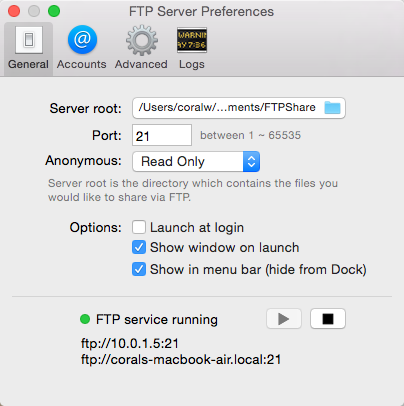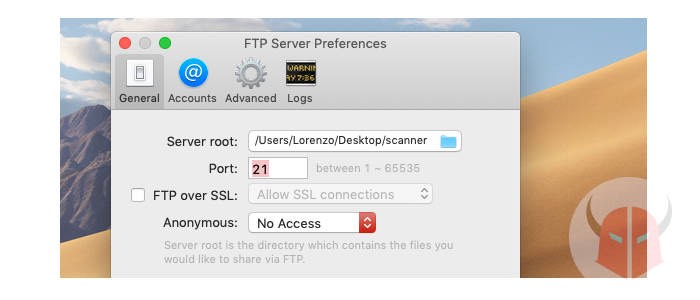
netrc will need to be created per user, which can be done with the following:īecause you’re going to put password information in there, let’s also restrict who can look at it:

netrc file allows FTP to perform automatic logins to FTP servers based on the name (not that there aren’t subcommands to do the same, but it allows you not to insert the password into your history or script). bash_profile, lives in your home directory (aka – ~). The ~/.netrc file (or just netrc) is a text file that, like. Using a netrc file you can do the same with opening an FTP session.
#Macos ftp server mac os x#
Notice the similarity between FTP commands and Mac OS X commands! This continues into repetition: in Mac OS X you can build commands to run automatically when you open a new shell.


get – download files from the FTP server.pwd – show the current directory on the FTP server.cd – change the working directory on the FTP server.ls – list the contents of a directory on the FTP server.The commands you issue during an FTP session are issued in an interactive mode of the shell, where you are actually running them against the target server When using FTP you will login to an FTP server, then issue some commands, one of which will kill your session to the host. The ftp command that runs on a Mac is similar to that from any other platform, including Windows – and not much has changed with regard to FTP for a long, long time.


 0 kommentar(er)
0 kommentar(er)
